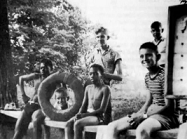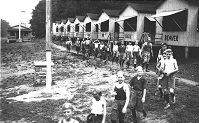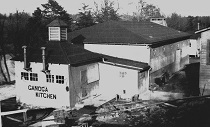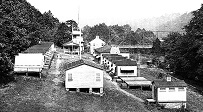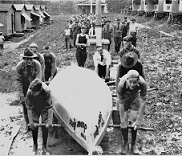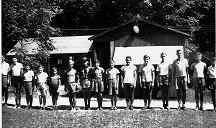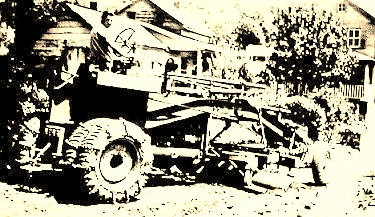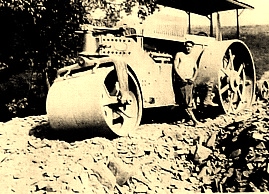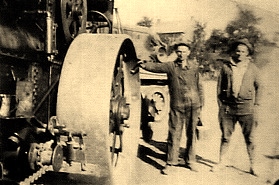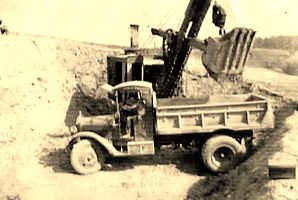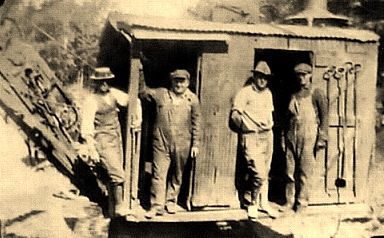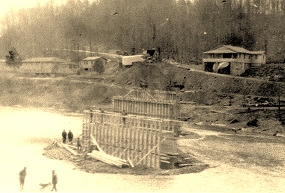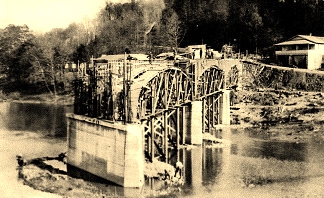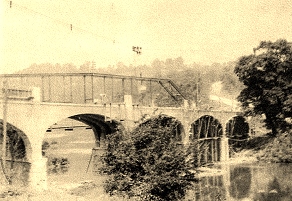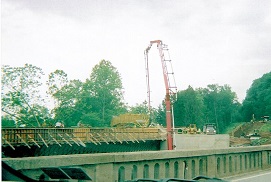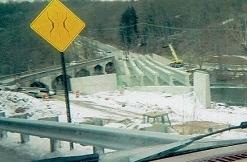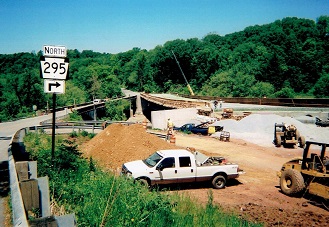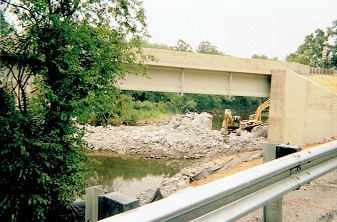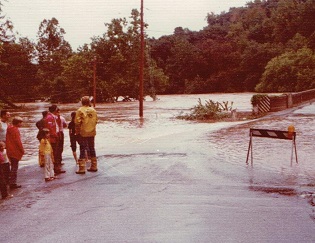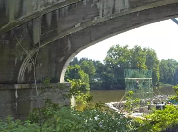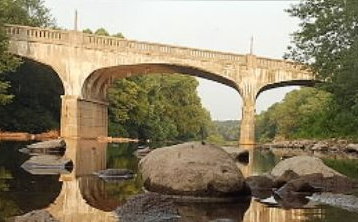

Susquehanna Trail Northeastern York County
"The Susquehanna Trail Association was established in Williamsport, on February 2nd, 1917; it was modeled after the successful nationwide Lincoln Highway Association, founded four years earlier.The Board of Governors of the Susquehanna Trail Association immediately selected State Route 4, which had existed for several years between Harrisburg and Williamsport, as their first road segment of the Susquehanna Trail.... By the fall of 1917, the Board of Governors selected the route they would champion north from Williamsport to the New York State line. Williamsport Chamber of Commerce favored placing the Susquehanna Trail through Gettysburg over a route through York, However, the full Board of Governors would ultimately decide if Gettysburg or York would get the Susquehanna Trail."
"Yorkers sprang into action to attract the Susquehanna Trail. They planned for the visit by the Board of Governors of the Susquehanna Trail Association, who favored a York County route through Dillsburg, Wellsville, and Dover. The York Committee planned to propose a better route through Emigsville, Manchester Borough, York Haven Borough, and Newberrytown. For those familiar with the Susquehanna Trail, north of York, you realize that neither of these routes ultimately became the final route of The Trail."
"In 1923, it had been five years since York was selected over Gettysburg as the southern extension city on the Susquehanna Trail. The concrete Trail from York to the Maryland line was completed by the end of 1923. However, the laying of concrete over most of the Trail between York and Harrisburg was barely underway by the end of 1923. York had been successful in diverting funds to improve the roadway between York and York Haven, before doing hardly any work on the Trail route between York and Newberrytown. This was the reason why over100 people traveling the unimproved Trail between York and Newberrytown were still getting stuck in the mud during 1923."
This prompted the Williamsport Chamber of Commerce to send speakers to push for their original Trail route through towns, such as Gettysburg, Thurmont, Frederick and Rockville. They believed this would provide more travelers from the South going to New York to stop in Williamsport. They actively fired-up these communities on their cause to bypass York and demand a route change. Susquehanna Trail route signs where even put up by them on the route they wanted. These actions backfired because it only kick-start the work on improving the Susquehanna Trail between York and Harrisburg. As a result, York County did not lose the Susquehanna Trail. In 1927, PA Route 4 Susquehanna Trail was renumbered and became US Route 111.
In 1952, a new expressway opened from Yocumtown to the PA Turnpike. In 1956, it opened to Strinestown. Then in the early 60's, the expressway known as I-83 (one of PA's first interstates) was finished in York County. By 1963 (less than 40 years of primary use in York County), US 111 (Susquehanna Trail) was decommissioned.
Ironically, I-83 parallels the Susquehanna Trail, connections Baltimore through York County but stops in Harrisburg. On the other hand, Route 15, which starts in the South and goes to New York State, does go through both Gettysburg and Williamsport, bypasses York, and follows much of the original Susquehanna Trail once it is above Harrisburg. It is still the main route from Harrisburg to Williamsport. The Williamsport Chamber of Commerce got their wish. However, the route still goes through many towns and is mostly two lanes. Instead of getting stuck in the mud, you get stuck in traffic. Today, the main route from the South to New York State is I-81 which bypasses both York and Williamsport.
"Yorkers sprang into action to attract the Susquehanna Trail. They planned for the visit by the Board of Governors of the Susquehanna Trail Association, who favored a York County route through Dillsburg, Wellsville, and Dover. The York Committee planned to propose a better route through Emigsville, Manchester Borough, York Haven Borough, and Newberrytown. For those familiar with the Susquehanna Trail, north of York, you realize that neither of these routes ultimately became the final route of The Trail."
"In 1923, it had been five years since York was selected over Gettysburg as the southern extension city on the Susquehanna Trail. The concrete Trail from York to the Maryland line was completed by the end of 1923. However, the laying of concrete over most of the Trail between York and Harrisburg was barely underway by the end of 1923. York had been successful in diverting funds to improve the roadway between York and York Haven, before doing hardly any work on the Trail route between York and Newberrytown. This was the reason why over100 people traveling the unimproved Trail between York and Newberrytown were still getting stuck in the mud during 1923."
This prompted the Williamsport Chamber of Commerce to send speakers to push for their original Trail route through towns, such as Gettysburg, Thurmont, Frederick and Rockville. They believed this would provide more travelers from the South going to New York to stop in Williamsport. They actively fired-up these communities on their cause to bypass York and demand a route change. Susquehanna Trail route signs where even put up by them on the route they wanted. These actions backfired because it only kick-start the work on improving the Susquehanna Trail between York and Harrisburg. As a result, York County did not lose the Susquehanna Trail. In 1927, PA Route 4 Susquehanna Trail was renumbered and became US Route 111.
In 1952, a new expressway opened from Yocumtown to the PA Turnpike. In 1956, it opened to Strinestown. Then in the early 60's, the expressway known as I-83 (one of PA's first interstates) was finished in York County. By 1963 (less than 40 years of primary use in York County), US 111 (Susquehanna Trail) was decommissioned.
Ironically, I-83 parallels the Susquehanna Trail, connections Baltimore through York County but stops in Harrisburg. On the other hand, Route 15, which starts in the South and goes to New York State, does go through both Gettysburg and Williamsport, bypasses York, and follows much of the original Susquehanna Trail once it is above Harrisburg. It is still the main route from Harrisburg to Williamsport. The Williamsport Chamber of Commerce got their wish. However, the route still goes through many towns and is mostly two lanes. Instead of getting stuck in the mud, you get stuck in traffic. Today, the main route from the South to New York State is I-81 which bypasses both York and Williamsport.
North Eastern York County History In Preservation NeyChip
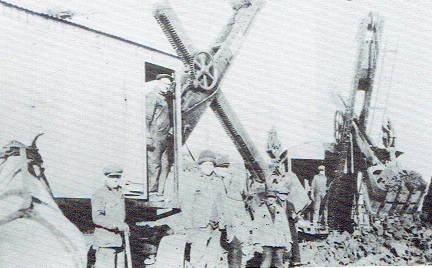
Susquehanna Trail posts excerpts, references, and additional information:
Story of the Susquehanna Trail in the Good Roads Movement: Part 1
The Wellsboro Agitator campaigns for the Susquehanna Trail
The Susquehanna Trail forks at Amity Hall
The Susquehanna Trail lands York, PA at the Crossroads of PA Routes 1 & 4
Susquehanna Trail to Tap the Lincoln Highway at either Gettysburg or York Considered
Yorkers spring into action To Attract the Susquehanna Trail
Board of Governors of the Susquehanna Trail Association visit York in 1918
Susquehanna Trail Association switches in favor of a York Haven routel
Establishment of the Susquehanna Trail in York County during 1918
Zion View gets the Susquehanna Trail; Intersection with North George St
Susquehanna Trail extends from York to the Maryland line
The Road to JOPPA; origins of Susquehanna Trail in Southern York County
Susquehanna Trail incites a Halloween Jubilee
The Susquehanna Trail as a Ribbon of Concrete
York is In Danger of Losing the Susquehanna Trail during 1923
Newly Completed Susquehanna Trail teems with Historical Scenes
Agitating for a Susquehanna Trail Celebration
High Jinks on the Susquehanna Trail
History of The Susquehanna Trail Route Numbers
Susquehanna Trail through York County; Wrap-Up
Remembering Besser’s on the Susquehanna Trail
Susquehanna Trail WWI Memorial Sycamores
The Susquehanna Trail: Greatest highway in Eastern America
Camp Ganoga and the Susquehanna Trail
Susquehanna Trail Bridges
Old Ganoga Bridge: 'It is a highly unusual sight in York County
Once popular Ganoga Bridge now lightly used York County landmark
Glen Rock Motor Club vs York and Maryland Line Turnpike Company
Story of the Susquehanna Trail in the Good Roads Movement: Part 1
The Wellsboro Agitator campaigns for the Susquehanna Trail
The Susquehanna Trail forks at Amity Hall
The Susquehanna Trail lands York, PA at the Crossroads of PA Routes 1 & 4
Susquehanna Trail to Tap the Lincoln Highway at either Gettysburg or York Considered
Yorkers spring into action To Attract the Susquehanna Trail
Board of Governors of the Susquehanna Trail Association visit York in 1918
Susquehanna Trail Association switches in favor of a York Haven routel
Establishment of the Susquehanna Trail in York County during 1918
Zion View gets the Susquehanna Trail; Intersection with North George St
Susquehanna Trail extends from York to the Maryland line
The Road to JOPPA; origins of Susquehanna Trail in Southern York County
Susquehanna Trail incites a Halloween Jubilee
The Susquehanna Trail as a Ribbon of Concrete
York is In Danger of Losing the Susquehanna Trail during 1923
Newly Completed Susquehanna Trail teems with Historical Scenes
Agitating for a Susquehanna Trail Celebration
High Jinks on the Susquehanna Trail
History of The Susquehanna Trail Route Numbers
Susquehanna Trail through York County; Wrap-Up
Remembering Besser’s on the Susquehanna Trail
Susquehanna Trail WWI Memorial Sycamores
The Susquehanna Trail: Greatest highway in Eastern America
Camp Ganoga and the Susquehanna Trail
Susquehanna Trail Bridges
Old Ganoga Bridge: 'It is a highly unusual sight in York County
Once popular Ganoga Bridge now lightly used York County landmark
Glen Rock Motor Club vs York and Maryland Line Turnpike Company
Construction of Susquehanna
Trail at Beshore Hill 1923-1924
Trail at Beshore Hill 1923-1924
Ganoga Bridge built1926
Roll over to see new brdge.
Roll over to see new brdge.
Old 1926 Ganoga Bridge
Old Ganoga Bridge with
new started in background
Roll over pic to see it flooded.
new started in background
Roll over pic to see it flooded.
New 2009 Ganoga Bridge
Maps, pics and excerpts are from Jim McClure and Stephen. H. Smith, 2014 thru 2016 posts listed below.
Ganoga Bridge location red arrow.
The Ganoga Bridge was constructed as a part of the Susquehanna Trail in 1926. The bridge was named after and dedicated to Boy Scout Camp Ganoga, which the span divided into two parts. (Ganoga is from from the Indian words “By the water.”) The book “On My Honor” says the bridge bore bronze plaques of an Indian profile. It contained 12 light standards representing the 12 Scout laws. Also, there were two Boy Scout plaques that appeared at the two ends of Ganoga Bridge. (Prominent York artist Charles Rudy designed the plaques. The one pictured above is now at York County Heritage Trust and the other is at Boy Scout Camp Tuckahoe. Camp Ganoga closed in 1945.) Other than the Columbia-Wrightsville Bridge, the old beautiful bridge may have been the biggest multi-span, concrete arch bridge in the entire County. From the1920s to 1950s, it carried thousands of vehicles daily over the Conewago Creek. However, Its approaches are oddly banked leading to many accidents. One resident remembers a crash on or near the bridge involved a large Greyhound Bus. Interstate 83 replaced it as the main north-south thoroughfare through the County. After years of neglect by Penn DOT, it was decided to replace rather than make any attempt at repair. The new bridge took the land that included the remaining original foundations from Camp Ganoga's first buildings. The replacement bridge has no features that will never inspire anyone to take a historical picture or write a piece. The Ganoga Bridge was torn down in 2012.
Ganoga Bridge History
Ganoga Boy Scout Camp
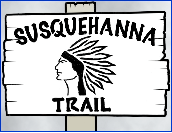
Even in 1928, the Susquehanna Trail Travel Guide by Williamsport talks about their route through Gettysburg.
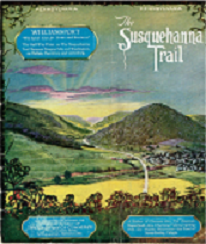
Replacement highway 83 construction near Strinestown
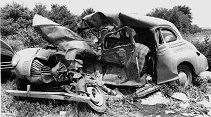
3 killed at Ganoga Bridge
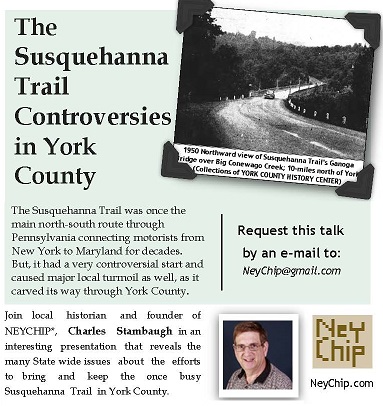
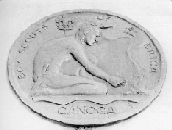

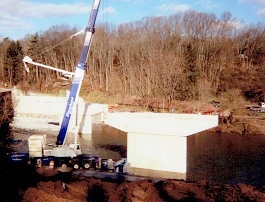
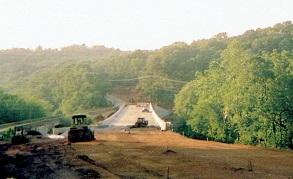
NeyChip would love
to hear from you.
NeyChip@gmail.com
to hear from you.
NeyChip@gmail.com
